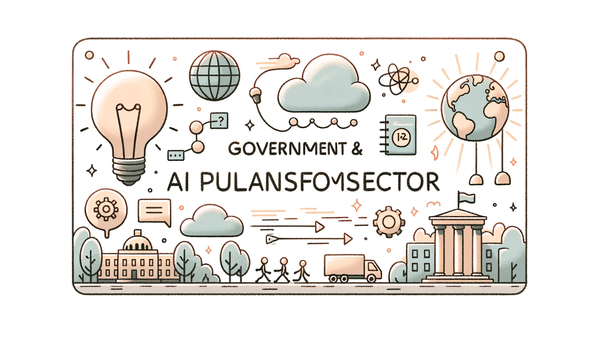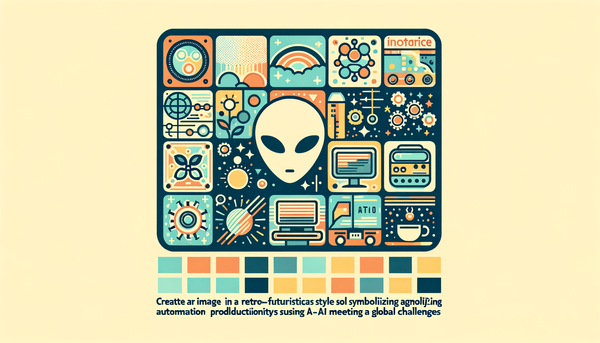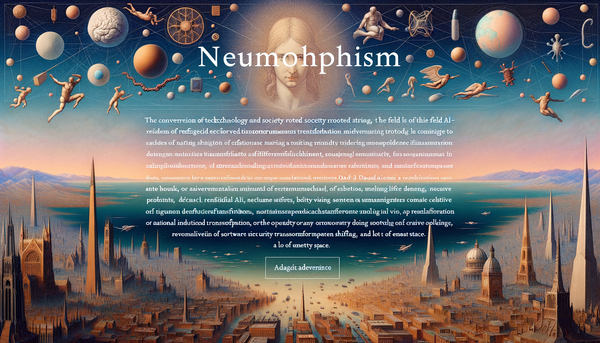AI Innovations in Networking and Consumer Electronics
This article delves into the multifaceted advancements in artificial intelligence, spanning from AI-powered telecommunications and networking fabrics to innovative consumer electronics that are reshaping industries. We explore how Arrcus is enabling bold telco visions for Liberty Global, pioneering next-generation networking fabrics for AI clusters, and launching cutting-edge AI Ethernet switches. Additionally, we examine the groundbreaking innovations by TCL at Mobile World Congress and emerging applications of AI in startups like StudyFetch, offering insights into how AI continues to transform public safety, industrial automation, and immersive entertainment.
Revolutionizing Telecommunications and Public Safety
In the arena of telecommunications, advanced infrastructure is the backbone of progress. With the deployment of sophisticated video solutions designed for public safety and industrial automation, the integration of artificial intelligence into traditional telco operations is transforming an age-old industry. One notable case is Arrcus enabling Liberty Global’s AI-powered telco vision, an initiative that showcases the considerable potential of coupling AI solutions with state-of-the-art networking technologies.
This transformation is not merely a technological leap but also represents a paradigm shift in how data is transmitted, processed, and utilized. Advanced video solutions are now being deployed for tasks that range from monitoring public spaces to guiding industrial automation protocols in factories, ensuring that safety measures are not just reactive but proactive too.
The adoption of these cutting-edge technologies is underpinned by the need for speed, reliability, and the capacity to handle massive data streams. As one industry analyst remarked,
"The machines rose from the ashes of the nuclear fire,"
a metaphorical nod to the massive energy and innovation driving these advancements. Whether it’s in streamlining communication protocols or managing surveillance networks, the influence of AI in the telecommunications sector is pervasive and ever-expanding.
When we consider the impact on public safety, the integration of real-time video analytics powered by AI can significantly reduce response times during emergencies. These video solutions leverage high-resolution cameras analyzed by advanced algorithms that can detect anomalies instantly, providing law enforcement and safety officials with the critical information they need before a situation escalates. In industrial environments, the same technology is repurposed to monitor machinery performance, reduce downtime, and predict maintenance needs, thereby increasing overall operational efficiency.
For readers interested in a deeper dive into how these innovations are set to change the landscape of networking and telecommunications, check out the related insights on our pages like Arrcus Powers a New Era of AI in Telecommunications and Entertainment and Arrcus Powers the Future of AI Networking and Devices.
Next-Generation Networking Fabric and AI Clusters
Another groundbreaking development shaping the future of artificial intelligence is Arrcus’ enabling of Actapio with its next-generation networking fabric to build out AI clusters for large language models. In the era where large language models (LLMs) like GPT and BERT are rapidly evolving, the infrastructure required to support them must be equally innovative and robust.
The relevance of this advancement cannot be understated. AI clusters require efficient data transmission across distributed systems, and the performance of these clusters directly influences the speed and accuracy of language models that underpin many of today’s AI applications. The next-gen networking fabric developed by Arrcus, which facilitates the creation and operation of these clusters, is at the forefront of this technological evolution.
This solution is not just a theoretical concept – it represents a concrete step forward in manufacturing the infrastructure needed for developing powerful AI models. By seamlessly integrating high-speed networking with optimized data pipelines, businesses can now enjoy faster processing times and more efficient training cycles for their AI systems.
Consider the training of a complex language model that relies on vast amounts of data and high computational horsepower. With the help of improved networking fabrics, data flows are no longer a bottleneck. Instead, they serve as an enabler for more fluid, efficient computations and faster turnaround times. The implications of such advancements stretch across various sectors, from natural language processing to decision-support systems in autonomous vehicles.
Drawing parallels to historical milestones, one might recall the inception of the Internet, where revolutionary networking technologies spurred unprecedented advances in digital communication. Today, a similar wave is emerging in the realm of AI clusters, where the promise of next-gen networking is set to unlock new capabilities in machine learning and data analytics. For further reading on how Arrcus is revolutionizing networking, readers can visit topics like Arrcus Unveils AI Ethernet Switch to Revolutionize Networking.
Telco Grade AI Ethernet Switch and the NVIDIA Spectrum Platform
Exploring the technical aspects further, Arrcus has also announced their Telco Grade AI Ethernet Switch (TGAX) based on the NVIDIA Spectrum platform. This product announcement has generated considerable attention both in industry circles and the media, with similar news reported by sources such as Business Wire and Silicon Canals.
The introduction of the TGAX switch marks a critical juncture for AI-enhanced networking. The utilization of the NVIDIA Spectrum platform advances the capabilities of Ethernet switches by integrating AI directly into the data switching infrastructure. This integration provides increased throughput, lower latency, and enhanced packet processing capabilities – qualities essential for modern telcos and data centers.
What sets this innovation apart is its dual utility: not only does it perform the conventional tasks of data routing and switching, but it also executes complex AI-driven analytics directly on network traffic. This means that the switch can dynamically allocate bandwidth, detect anomalies, and optimize data flow in real time, contributing to a more resilient and adaptive network environment.
The potential applications of this technology are vast. In telecommunications, for example, the TGAX switch is a game-changer for 5G networks, where the need for low-latency and high-speed communication is paramount. By leveraging AI at the hardware level, network providers can ensure that critical applications – from emergency services to industrial control systems – function without interruption, even during peak usage times.
A striking insight into the future of technology comes from Andrew Ng’s comparison: "Artificial intelligence is the new electricity." This sentiment encapsulates how AI, integrated at every level from hardware switches to global networks, is becoming a fundamental utility that powers modern digital infrastructure.
For users keen on understanding the broader impact of these advancements on network performance and reliability, exploring our detailed articles on Arrcus’ innovations can provide a wealth of extra context and technical insights.
Consumer-Focused AI Innovations: TCL at MWC and the AI-Powered Tablet
The tide of AI advancement is not limited to telecommunications or enterprise networking. It is also making significant inroads into the consumer electronics space, transforming the way everyday gadgets interact with users. TCL is one of the prime examples of how AI is penetrating consumer technology.
Reverberating through the tech community, TCL made headlines at Mobile World Congress 2025 by showcasing their next-generation 5G RedCap technologies, AI innovations, and commitment to sustainability. Not only did TCL exhibit advanced connectivity solutions, but the company also unveiled their first AI-powered tablet, the TCL NXTPAPER 11 Plus. This device is notable not just for its advanced processing capabilities but also for its emphasis on personalization and comfort.
The introduction of an AI-powered tablet marks a significant deviation from standard consumer electronics. In today's fast-paced digital world, devices that can learn from usage patterns, adapt to individual preferences, and even predict user behaviors can greatly enhance the user experience. For instance, the TCL NXTPAPER 11 Plus leverages AI to optimize battery life, adjust screen brightness in real time, and provide intuitive user interfaces, making it adaptable to a wide range of uses – from daily communications to intensive work tasks.
Moreover, TCL’s participation at MWC signifies an industry-wide shift where sustainability and innovation go hand in hand. The incorporation of environmentally responsible practices alongside cutting-edge AI-driven features speaks volumes about the company's forward-thinking ethos. As public awareness around sustainability grows, such initiatives also play a crucial role in emphasizing that technological progress and environmental stewardship can coexist harmoniously.
This focus on consumer technology further underscores the democratization of AI. While earlier applications were predominantly in industrial and enterprise settings, the modern shift towards integrating AI into devices accessible to the everyday consumer heralds a new era. It illustrates just how versatile AI technology is, reaffirming that its applications can range from enhancing public safety in telecom networks to providing a more responsive and adaptive handheld device.
For visitors interested in more discussions on how AI is redefining industries from top to bottom, a look at related news such as Arrcus Powers the Future of AI-Driven Telecommunications and Beyond provides additional layers of context and analysis.
AI in Diverse Industries: The Case of StudyFetch and Beyond
While telecommunications and consumer electronics often grab headlines, the transformative power of AI is also making significant inroads into other sectors. One such venture is StudyFetch, which is leveraging artificial intelligence to optimize educational and recruitment processes. Although details around the specifics of StudyFetch’s utilization of AI have remained under wraps, the implications are immediately clear.
Educational institutions and businesses alike are increasingly employing AI-powered analytics to better understand their audiences, anticipate needs, and refine their services. AI algorithms can sift through massive datasets to reveal patterns and insights that were previously indiscernible to human analysts. In the case of StudyFetch, such applications could include predicting student performance, identifying areas for academic improvement, or even customizing learning pathways tailored to individual aptitudes.
The broader trend here is reflective of a shift in industrial strategy, where AI is not an isolated tool but a core component of operational systems. This crossover of AI into areas once thought to be primarily human-centric heralds a future where decision-making processes are increasingly augmented by data-driven insights. An understanding of where AI delivers tangible results is reshaping conventional workflows, underscoring how technology can enhance – rather than replace – human ingenuity.
Merging academic prowess with cutting-edge technology creates environments where feedback loops are not just faster but also more accurate. For example, when an AI system identifies a recurrent issue at a specific point in a lecture or training module, educators have the opportunity to intervene early, tailoring their methods to improve comprehension rates and student engagement.
This widespread application of AI emphasizes that the technology's potential is bound only by the creativity of its users. Whether it is in the realms of telecommunications, consumer electronics, or education, AI continues to be the catalyst that bridges the gap between theoretical possibilities and practical implementations.
Reflections on the Broader AI Ecosystem and Future Directions
To round off our exploration of these dynamic advancements, it’s imperative to reflect on the broader ecosystem of artificial intelligence and its trajectory into the future. Several themes emerge from the innovations discussed, each highlighting a crucial intersection between AI and real-world applications. From AI-tailored networking infrastructures to smart consumer devices and adaptive educational tools, the threads binding these sectors are clear: speed, efficiency, and personalization.
One cannot help but ponder the implications of such widespread integration. As Stephen Hawking once warned,
"The development of full artificial intelligence could spell the end of the human race."
Although such remarks stir debate, they serve to remind us that every breakthrough comes paired with profound considerations. The advantage of AI is clear when it improves connectivity, optimizes systems, and personalizes experiences. At the same time, ensuring ethical approaches and robust safeguards remain critical as we proceed.
Central to this evolution is the celebration of collaboration and the cross-pollination of ideas across industries. Pioneering entities like Arrcus and TCL are demonstrating that when innovation in networking and communications meets consumer technology and industrial applications, the resultant advancements pave the way for heightened operational efficiencies and enriched user experiences.
Looking forward, the integration of technologies such as the NVIDIA Spectrum platform infuses traditional networking hardware with new capabilities. The continuous developments in AI-powered switches, enhanced network fabrics, and consumer electronics will likely shape the societal fabric in ways we have only begun to imagine. This dynamic interplay ensures that industries remain agile, responsive, and prepared to harness the nuances of artificial intelligence.
It’s also worth noting that while some may see these rapid transformations as disruptive, many view them as evolutionary steps towards a future of harmonious human-technology collaboration. Each innovation, whether it’s a robust AI-powered video solution or an intuitive AI tablet, reflects a broader commitment to leveraging technology in service of progress.
In essence, we are all witnesses to an era where artificial intelligence stands as both an enabler and an enhancer of human activity. Its influences traverse boundaries, stretching from how data is conveyed across global networks to the ways consumers interact with personal devices. By embracing these technologies thoughtfully, companies can unlock unprecedented levels of efficiency, creativity, and connectivity.
This mindset of continual improvement and adaptation is crucial, especially as we recall the words of another influential voice: Andrew Ng’s observation on AI’s transformative power. Such reflections encourage industry leaders and innovators alike to pursue excellence while considering broader societal impacts.
Examples and Real-World Applications
Let’s take a moment to look at some tangible examples of these innovations at work. Consider a bustling urban center where smart video surveillance systems powered by AI not only record incidents but also use real-time analytics to alert security teams proactively. Here, the blend of high-definition video, fast-processing AI algorithms, and resilient telecommunications infrastructure can be the difference between a quickly contained incident and a major emergency.
In an industrial setting, imagine factories equipped with sensors and cameras that continuously monitor operations. When an anomaly is detected in the production line, the system can automatically notify maintenance teams, trigger pre-emptive measures, and even recalibrate machinery without human intervention. Such a setup drastically reduces downtime and can save companies millions by preventing catastrophic failures.
On the consumer front, the TCL NXTPAPER 11 Plus represents a shift toward devices that adapt to their users. With built-in AI features, this tablet can learn the user's habits – adjusting notifications, optimizing battery usage, and even curating content based on previous interactions. This level of personalization is a direct consequence of the incremental integration of AI across hardware and software layers, ensuring that technology serves individuals in more intimate and intuitive ways.
Similarly, with next-generation networking fabrics, data centers are now better prepared to handle the demands of vast AI clusters responsible for training large language models. This has far-reaching implications in various sectors including healthcare, finance, and education, where rapid data processing and accurate analytics are paramount. The integration of an optimized networking platform into these environments not only speeds up computations but fosters a future where real-time analytics can transform decision-making processes.
Case in point: Consider the realm of smart cities, where every facet – from traffic management to energy consumption – is controlled by a network of interconnected devices. The evolution of AI-powered switches and networking fabrics directly contributes to the seamless operation of these urban ecosystems by ensuring that data is routed efficiently and analyzed promptly for actionable insights.
Looking Ahead: Merging Innovation with Responsibility
With such rapid innovation, there is an ever-present need to balance breakthrough technology with ethical considerations and responsibility. As we marvel at the progress made by companies like Arrcus and TCL, it remains essential to develop robust frameworks to govern the deployment of AI systems. Integrating ethical AI guidelines, ensuring transparency, and fostering a culture of responsibility can help maximize the benefits of these advanced systems while mitigating risks.
Many experts believe that collaborative efforts between industry players, regulatory bodies, and academic institutions will be vital for setting the right standards. Consider the collaborative nature of developing Telco Grade AI Ethernet Switches; the synergy between hardware innovators and AI specialists is critical to ensuring that the resulting products meet both technical specifications and ethical standards. This multi-stakeholder approach can ultimately pave the way for a more secure and inclusive digital future.
Furthermore, this era of digital transformation is also spurring new research into areas such as edge computing, decentralized intelligence, and quantum-enhanced networks. Each of these directions promises to add a unique layer of complexity and capability to the AI ecosystem. It’s an exciting time when diverse technologies merge to create solutions that were previously confined to the realm of science fiction.
Yet, as we forge ahead, it is worth recalling that technological progress is as much about people as it is about machines. The intersection of live human creativity and precise computational modeling is what has always driven innovation forward. In this context, responsible AI deployment becomes not just a regulatory requirement but a moral imperative.
Stories of communities benefiting from AI-driven enhancements in public safety and infrastructure serve as powerful reminders of this potential. In every smart device, every seemingly minute improvement in data routing, and every enhanced video solution, there lies the promise of a safer, more connected, and more efficient world.
Further Readings
For readers who are keen to explore more about these cutting-edge developments, consider delving deeper into resources provided by our partners and related publications. You may review detailed discussions on Arrcus' networking innovations by visiting Arrcus Powers the Future of AI Networking and Devices, or check out the transformative journey of telecommunications at Arrcus Powers a New Era of AI in Telecommunications and Entertainment. Additional insights can be found in the coverage of the Telco Grade AI Ethernet Switch as reported in Arrcus Unveils AI Ethernet Switch to Revolutionize Networking and related articles on our platform.
Moreover, to gauge the impact of AI in consumer technology, exploring stories around TCL’s recent launches and their participation at Mobile World Congress will offer a comprehensive view of how artificial intelligence is not only a tool for modern communication but also a cornerstone for future innovations. These further readings provide a wealth of background that underscores the transformative nature of AI across various industries.




